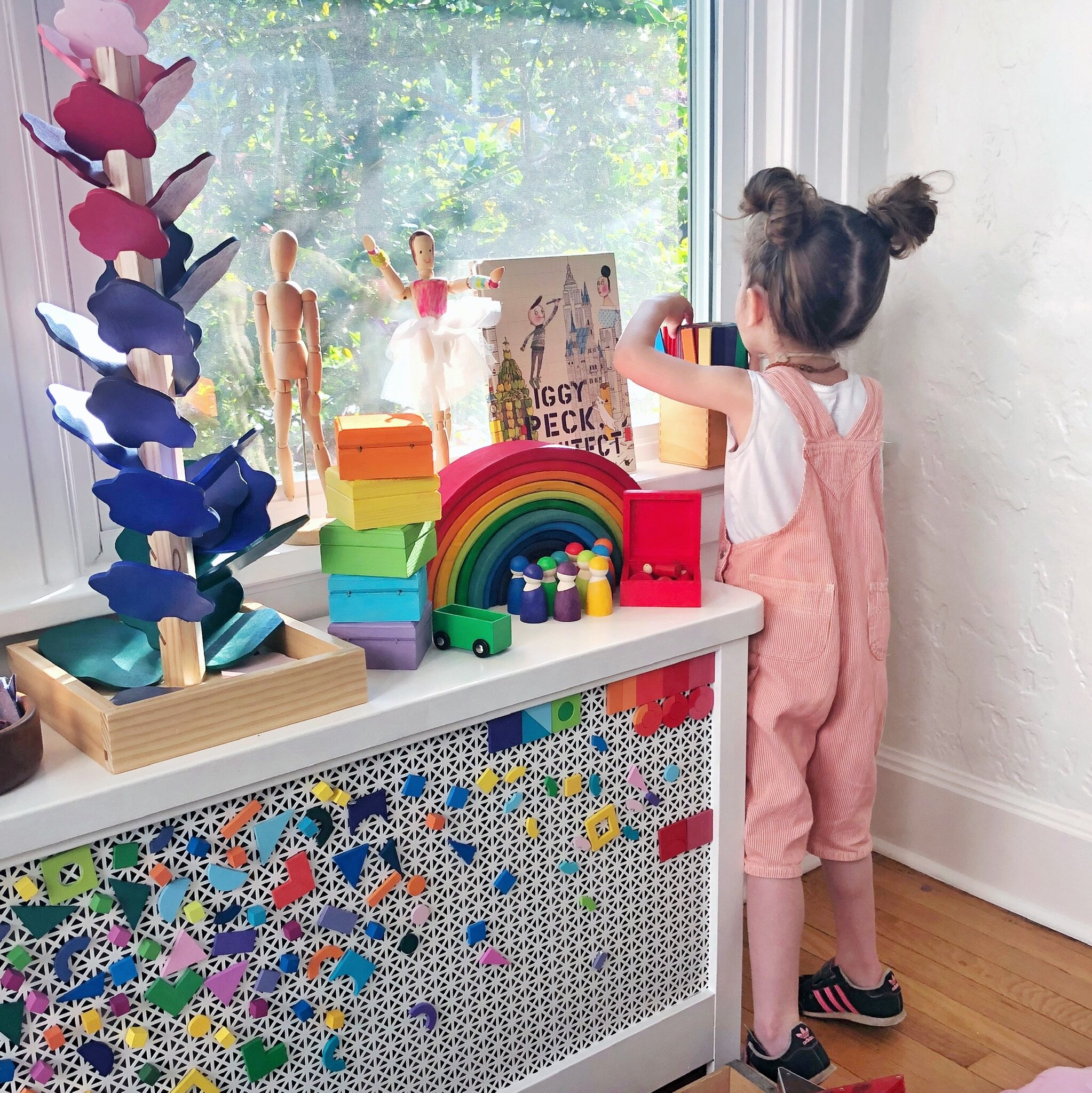Build Your Child's Confidence and Executive Function Skills With Paper and Glue
/If your preschooler is struggling with any of the following, you’re not alone—and there’s nothing wrong with your child:
Getting started with play
Needing help making simple choices
Following others instead of sharing their own ideas
(These are all signs of a brain still learning the foundational skills for independence)
One of my favorite support activities at this stage? Collage.
Before you freak out about the glue, hear me out. (And if mess stresses you out, I’ve got an easy no-glue option too.)
Collage doesn’t get the credit it deserves:
Every piece of paper, every placement, and every material choice is a tiny decision your child gets to practice making. Unlike bigger choices that might feel overwhelming (like picking an outfit, a toy, or a snack), these small decisions come with zero pressure.
When my oldest was around Two, I would plop him in his high chair with some glue, cardboard and random wrappers and paper scraps from our recycle bin. It kept him busy for the entire time I needed to unload the dishwasher and prep lunch. (If you are a parent, you know that it a very long time in toddler speak.)
Glue? With a two-year-old?
Remember, I am a former preschool teacher so a little glue never scares me. Plus, a wet paper towel can clear up the whole mess in under a minute. Well worth it.
(Excuse the blurry picture. It was 2009)
What You’ll Need:
Base Material: Use sturdy paper or grab some cardboard from your latest Amazon box. Anything that can hold glue works.
Glue: I like these glue pens because they build fine motor strength and minimize mess. If glue isn’t your thing, clear contact paper (sticky side up) is a great alternative.
Collage Materials: Scraps you have lying around work great—magazines, newspapers, torn tissue paper, colored tape, etc.
What This Might Look Like in Real Life:
If you’re like most parents, your instinct will be to jump in and “help”—show them how to use the glue, or suggest making a face or flower. Instead, try this:
Trust your child. Be a quiet presence. Let them lead.
They might drip lots of glue and only add one pom pom. They might tear paper into tiny pieces for 15 minutes before sticking anything down. That’s okay. These moments of experimentation are where the real learning happens.
When children freely explore and place materials, they're practicing the same skills they need for everyday independence, like getting started, staying focused, and choosing between options. And the best part? There’s no “wrong” way to do it. Each choice is a small win, gradually building the confidence they need for bigger decisions later on.
A Quick Note on Development:
It’s completely normal for preschoolers to hesitate with play, struggle to make decisions, or follow others. These behaviors aren’t red flags—they’re reminders that executive function skills are still growing. Your job isn’t to fix or rush the process. It’s to give them small, low-pressure chances to try—and try again. Collage is a great way to do that.
Tip: Many children become totally absorbed in the act of dripping and dotting glue—and that’s developmentally appropriate. The way glue drips, spreads, and sticks is fascinating to them.
It builds control, patience, and a sense of “I can do this.”
Want to Try This at Home?
Here’s a list of our favorite open-ended collage supplies:
(P.S. Many of these are likely already in your recycling bin or craft drawer)
Puff Balls/ Feathers/ Glue Stick Pens /Contact Paper / Gems/ Shape Cuts / Colored Tissue Paper / Googly Eyes / Foam Shapes
Let Them Lead— Get Curious Later
Be a quiet observer while your child works. Later, invite them to reflect on their process with a curious, open-ended question like:
"I’m so interested in this part—how did you decide to put the green button right here?"
Questions like this help your child feel seen, and they remind you that what might look random is often full of intention. You’re not just building a collage—you’re building connection.
I hope you enjoyed this blog! If you want to keep up with more Workspace for Children content, follow along on Instagram by clicking HERE.
Want To See More Blogs Like This One?
Check Out The Posts Below
Do you want more ideas like this that actually work with your real life and real materials?
If you loved how simple (but powerful) this collage invitation was, you’ll love The Play Plan—a digital guide packed with 25 easy-to-follow play prompts for kids aged 2–8, all using stuff you probably already have at home.
It’s designed to help you support your child’s development without constantly searching Pinterest or buying new toys.











Rescuing them from discomfort also robs them of resilience.